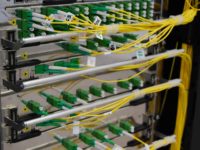This month’s discussion is on the fifth project delivery method (PDM) with the first performance contracting (PC) method being the traditional approach of completing a financial and engineering evaluation to reduce annual utility and operation costs (labor) and improve energy equipment/system performance. Based on a positive financial and engineering evaluation outcome, the PC firm will propose a single-source, multi-year contract to design, retrofit, operate, and maintain the facility for a period of time.
The PC firm will provide the upfront costs, complete the engineering and construction, and then operate and maintain the facility. This agreement of reduced operating cost and guaranteed savings/return on investment results in the client saving money while paying the PC firm monthly for its performance. Thus, we have “performance contracting.”
Another PC concept I have had in my head for years comes from my 50-plus years’ experience working in the design; construction; and service, operation, and maintenance arenas. Why not design-build-operate-maintain and certify the building project? There are PDMs that include building certification (e.g., LEED) based on budgeted performance but fall short of guaranteeing performance will be met.
Here is where a PC firm could differentiate itself from all the competition by guaranteeing the PDM results because the missing link in each of the other four PDMs is operating and maintaining obligations. The building owner/client will select and sign a contract scope of work that includes design-build-operate-maintain-certified with a PC, ensuring annual building program and design intent compliance.
The concept will require researching how to be a complete PC firm using analytical quality control, problem-solving methods made popular back in the 1920s by Walter A. Shewhart and further developed in Japan in the late 1940s and 1950s.
The AIA definition noted last month could be re-engineered to a PC definition that continued with, “financial responsibility, energy, and the environment; day-to-day space and occupant comfort, design intent, and operation.”
A PC company already experienced in taking on the risk of past projects could extend itself by going “the final yard” to complete success by having the project certified. For those knowledgeable about sales and getting out in front, this PDM-first would be ahead of the curve and leave the competition in the dust. This PC company of choice would have a lot of ground to make up before they would be ready to certify, as their PC projects were not only guaranteed for the financial performance but also for the project’s energy performance goals, the environment results, occupant comfort, and continuous building system design intent.
Deciding on the optimum PDM is essential, but only PC offers the potential to be the complete PDM.




